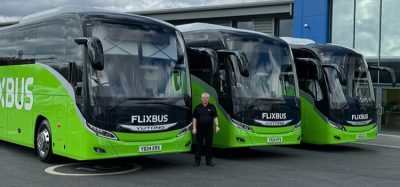Ultra-modern mobility in the Alps
- Like
- Digg
- Del
- Tumblr
- VKontakte
- Buffer
- Love This
- Odnoklassniki
- Meneame
- Blogger
- Amazon
- Yahoo Mail
- Gmail
- AOL
- Newsvine
- HackerNews
- Evernote
- MySpace
- Mail.ru
- Viadeo
- Line
- Comments
- Yummly
- SMS
- Viber
- Telegram
- Subscribe
- Skype
- Facebook Messenger
- Kakao
- LiveJournal
- Yammer
- Edgar
- Fintel
- Mix
- Instapaper
- Copy Link
Posted: 11 November 2013 | Martin Baltes, Chief Executive Officer, Innsbruck Transportation Authority and Harald Muhrer, Director of Infrastructure, Innsbruck Transportation Authority | No comments yet
Innsbruck’s transportation authority – Innsbrucker Verkehrsbetriebe und Stubaitalbahn GmbH (IVB) – is hard at work on the biggest project it has tackled to date: the tram/regional train system which is set to heighten public transportation capacity and provide better connections to towns in the outlying areas of the city of Innsbruck.
The state capital of Innsbruck lies in the heart of the Alps in Tyrol’s Inn Valley, through which runs one of Europe’s major traffic routes. In addition to the enormous north-south traffic, there is also quite heavy east-west traffic.
According to recent statistics, approximately 38,000 people commute into the city each day, with around 11,000 people commuting outwards to surrounding areas. In addition, Innsbruck is visited by immense numbers of tourists due to its vicinity to nearby alpine regions and the town’s unique city flair in both summer and winter.
Innsbruck’s transportation authority – Innsbrucker Verkehrsbetriebe und Stubaitalbahn GmbH (IVB) – is hard at work on the biggest project it has tackled to date: the tram/regional train system which is set to heighten public transportation capacity and provide better connections to towns in the outlying areas of the city of Innsbruck. The state capital of Innsbruck lies in the heart of the Alps in Tyrol’s Inn Valley, through which runs one of Europe’s major traffic routes. In addition to the enormous north-south traffic, there is also quite heavy east-west traffic. According to recent statistics, approximately 38,000 people commute into the city each day, with around 11,000 people commuting outwards to surrounding areas. In addition, Innsbruck is visited by immense numbers of tourists due to its vicinity to nearby alpine regions and the town’s unique city flair in both summer and winter.
Innsbruck’s transportation authority – Innsbrucker Verkehrsbetriebe und Stubaitalbahn GmbH (IVB) – is hard at work on the biggest project it has tackled to date: the tram/regional train system which is set to heighten public transportation capacity and provide better connections to towns in the outlying areas of the city of Innsbruck.
The state capital of Innsbruck lies in the heart of the Alps in Tyrol’s Inn Valley, through which runs one of Europe’s major traffic routes. In addition to the enormous north-south traffic, there is also quite heavy east-west traffic.
According to recent statistics, approximately 38,000 people commute into the city each day, with around 11,000 people commuting outwards to surrounding areas. In addition, Innsbruck is visited by immense numbers of tourists due to its vicinity to nearby alpine regions and the town’s unique city flair in both summer and winter.
Demand for public mobility has increased greatly in recent years: in 2012, IVB transported approximately 53 million passengers, 5.6% more than in the previous year. There are currently 159 buses and 32 trams in service; the route network of IVB covers 341km. IVB is responsible for the coordination, design and control of public transportation in Innsbruck, as well as for infrastructure, personnel and vehicle provision. One of the greatest challenges for IVB is how to successfully handle the ever-increasing numbers of passengers into the future.
Innovative partners
As the centrepiece of its corporate identity, IVB strives to be a highly modern company open to innovations and driving them forward in targetoriented ways. That is the mission statement which company executives and employees have jointly devised and agreed upon. It includes four corporate goals. One of them is ‘IVB must be an integral part of Innsbruck’. This is important as only when intimately integrated into the city does a company become conscious of its high degree of responsibility and act to carry out its task: ultra-modern mobility is the quintessence of urban quality of life.
Identifying with the city and its people is also the reason why IVB has set its sights on long-term sustainability. The project of a tram/regional train system, namely, a streetcar connection from the furthermost eastern rim to the furthermost western rim of the city, which additionally includes the immediately surrounding towns, must fulfil very high expectations. The main station in the heart of Innsbruck is currently the nodal point for commuters coming from outlying districts and towns. With a new east-west tram link and the corresponding ÖBB regional train connections east and west of Innsbruck, the traffic congestion in the centre of town can be significantly reduced.
The municipal area of Innsbruck is currently served by 16 diesel bus lines and three tram lines. Four lines run in the direction of the small city of Hall, about 10km away. One line shuttles between the Nordkettenbahn and Patscherkofelbergbahn – the cablecar/funicular railways to the north and to the south of the city. On top of that come three intra-urban tram lines and one inter-urban line. Line no. 1 connects the city districts of Saggen and Wilten and runs straight through the city; Line no. 3 runs from the eastern districts of Amras and Pradl through the inner city and since the end of 2012 has been extended to serve the western part of town as a diameter line in the tram/regional train project; Line no. 6, which runs from Wilten up through the hills to Igls, to the south of town. This is rounded out by the Stubaitalbahn, an 18km-long second ary train which connects the centre of Innsbruck (main station) with the hill towns, terminating the route in Fulpmes in the Stubai Valley.
Complex projects
Between 1988 and 2007, IVB operated the public transportation system in Innsbruck with three systems: tram, trolleybus and diesel bus – a costly and complex affair for a city the size of Innsbruck, ultimately making it an unfeasible public transportation solution, financially speaking. Authorities had to deal with several challenges to convert to two systems: the end of the working life of the trolleybuses was reached (repairs alone would have cost €600,000). The most heavily used trolleybus, Line O, running from the eastern to the western part of the city, had reached its uppermost capacity limit, at 30,000 passengers daily. And finally, the trams themselves were technically no longer up-to-date as a consequence of their age. It was concluded that the purchase of new trams would need to be combined with enhanced operational performance. These factors, as well as the continually increasing numbers of passengers, ultimately inspired the policy-makers to terminate the trolleybus system and in its place to invest in new trams and enlarge the tram network itself. As a temporary replacement for the trolleybuses, 10 new diesel buses were purchased.
There were a number of reasons behind the diesel bus-tram system decision. First, in terms of its passenger-carrying capacity, a tram is unbeatable. In a trolleybus or diesel bus, up to 110 passengers can be transported, whereas in a tram there is room for 160 passengers. That means that in a double-wagon tram up to 320 passengers can be transported simul taneously. For that number of passengers, three trolley or diesel buses would be necessary. Added to that is the lower energy consumption: a fully-loaded tram consumes about 0.25 litres of fuel, whereas a bus consumes about twice that amount (and a full car eight times that amount). Space requirements also support the tram decision: the surface used by a streetcar is 10m2, a bus uses 12m2 and a car 115m2. In view of the fact that there is little geographical space to expand in the city of Innsbruck, wedged between mountain ranges as it is, this is an important aspect. This decision to expand the tram network was made easier by the so-called Mobility Project enacted by the State of Tyrol: the legislative resolution to realise a tram/regional train system. This project is intended to connect the towns of Völs, west of the city, with Hall, 10km east of the city. Between 1989 and 1994, the state govern ment conducted studies to analyse the public transportation needs of the population and the feasibility of such a project. As an intermediate solution, it was decided to expand the route as far as the town of Rum at the eastern edge of Innsbruck. Even before this leg was completed, negotiations were initiated by the State of Tyrol to continue the line as far as Hall. The tram concept was passed in the legislature in 2001, followed by a number of subsequent studies, analyses and a financing agreement between the State of Tyrol and the City of Innsbruck.
Ultra-modern trams
On 27 March 2008, a giant step in the expansion of the intra-urban tram network was taken: the first of a total of 32 FLEXITY Outlook tram vehicles manufactured by Bombardier/Elin officially began operations. The biggest advant age of the new tram was that it was accessible for every single IVB passenger. The 100% low-platform entrances enabled elderly people, wheelchair users and parents with prams to enter the wagon without assistance. The new vehicles are also much more spacious than previous models: the interior provides enough space for prams and wheelchairs. A smooth and quiet ride, a high level of comfort and air-conditioned interiors added additional reasons for the high degree of acceptance of the new trains by the population.
In the year the FLEXITY Outlooks were introduced, the State of Tyrol and the City of Innsbruck passed ground-breaking legislation towards implementing a regional train-and-tram system for the central part of Tyrol. IVB was granted the commission to supervise, design and control the project. The first stage was to lengthen the already existing tram Line no. 3 in the west of the city. In a variety of working groups including policy makers from the City of Innsbruck, the State of Tyrol and IVB, plans and the decisions concerning the project have been on-going since 2009, on both political and technical levels.
The state government of Tyrol also comm – issioned IVB to conduct feasibility studies and initiate functional planning of the regional train system west of Innsbruck to Völs. In 2010, the starting shot was fired: the first phase of construction was launched. As early as autumn 2012, a significant segment to the west of town was opened. By 2018 the eastern leg is expected to be completed. Following that, the construction of the link between eastern and western surrounding towns will be initiated. Completion is expected in 2020.
The overall costs of the project come to approximately €372 million according to current calculations, of which €147 million will go towards the purchase of new vehicles. The regional train system will be jointly financed by the State of Tyrol and the City of Innsbruck. The city government will assume the cost of two thirds of the inner-city segments and tram vehicles, whereas the state government will shoulder one third of these costs. The construction costs of the tram/regional train tracks outside the city limits in the surrounding towns will be borne 100% by the State of Tyrol. The City of Innsbruck will assume 25% of the vehicle costs of the regional train.
Rolling stock to be expanded
For inner-city transportation and the tram/ regional train system, additional vehicles need to be purchased. In addition to the 32 trams in the current vehicle fleet, 10 additional wagons will be added. For the regional train stretch to the areas surrounding Innsbruck, an additional 12 vehicles are needed.
The routes of the tram/regional train system are oriented through the most heavily settled residential zones, past large companies and educational facilities in order to be near to as many people as possible. The new tram/regional train will thread its way through the most densely populated city districts of Hötting West/ Höttinger Au, Wilten, Pradl and Reichenau/ Olympisches Dorf. Directly adjacent to the tram/regional train are three universities: the Technical University in the western part of the city; the University of Innsbruck’s main campus including the medical school, law school and school of humanities in the centre of town; and the Social and Economic Sciences colleges. Thus, it is assured that as many people as possible are in a position to use the new lines. The new tram will no doubt make a big contribution to Innsbruck’s sustainable quality of life and be an integral part of the city.
Biography
Martin Baltes has been the Chief Executive Officer of IVB since 1997 and Chief Executive Officer of Inn-Bus GmbH since 1999. Martin was previously the Authorised Signatory of West Bus GmbH (1996-1997), Chief Operating Officer of City Transportation Utility Krefeld (1994-1997) and Authorised Signatory and Chief of the department for Products, Service and Quality of Verkehrsverbund Rhein-Ruhr GmbB (1986-1994). Martin studied regional planning in Dortmund.
Harald Muhrer is currently Director of Infra structure of IVB and has also been Deputy Chief Operating Officer of Trams and Buses since 2008. Harald joined IVB in 1992 in the Construction and Railway Maintenance Depart ment where he later become the Departmental Head in 1995. Harald graduated in 1981 from the Technical College for Superstructures.
Related topics
Fleet Management & Maintenance
Issue
Issue 5 2013
Related modes
Trams
Related cities
Austria
Related organisations
Innsbruck Transportation Authority
Related people
Martin Baltes








